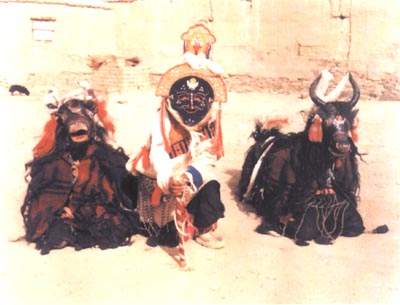
Tibetan opera dates back about 1,400 years. Compared with the few other folk operas of Chinese ethnic minorities, it has the longest history. According to Tibetan historical records, King Songtsan Gambo greatly admired the costumes, music and dancing of the Tang Dynasty introduced to Tibet by Princess Wencheng of the Tang Dynasty when she married the Tibetan king. He arranged for the training of 16 beautiful girls in a combined art form of the Tang-style and Tibetan folk music and dancing in order to entertain the princess. Later, this entertainment developed into a more clearly defined form of dancing, singing and facting.

In the eighth century, King Khrisong Detsan became a follower of Buddhism under the influence of his mother, Princess Jincheng. He invited the Lotus-Born Monk from India to spread Buddhism in Tibet and built the Samye Monastery. At the inauguration ceremony, a pantomimic dancing show based on the deity worship ritual of the Bon religion (a native religioin of Tibet) and Tibetan folk dances was staged.
